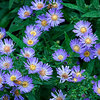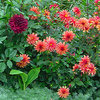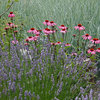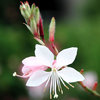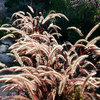Aster
Few plants can brighten a tired corner like these tough perennials. They thrive through summer and bloom nearly nonstop into fall if you keep the spent flowers picked. Full article
Starting in June, you'll find the plants at nurseries, usually in 1-gallon cans (though the best selection of dahlias is available in spring, when you can plant them from tubers).
Aster
These daisylike flowers are available in lavender, pink, or white. Three varieties we like: A. cordifolius 'Cape Cod' (Sunset climate zones 1-10, 14-21), A. c. 'Little Carlow' (zones 1-10, 14-21), and A. novi-belgii 'Melody' (zones 1-24).
Black-eyed Susan (Rudbeckia hirta)
Coreopsis (C. grandiflora)
Fluffy, golden yellow blooms atop tall stems. 'Sunray' is a dense, compact selection with double and semidouble flowers. Zones 2-24, H1, H2.
Dahlia
Bold blooms in a range of vibrant colors grow from tuberous roots. We planted pink and coral decorative dahlias and a red-and-yellow, cactus-flowered variety. Provide light shade in hot areas. Zones 1-24.
Purple coneflower (Echinacea purpurea)
Daisy flowers of rosy purple with knobby orange-brown centers, which resemble small beehives, atop clumps of bristly oblong leaves. Grows to 4 feet tall. Zones A2, A3, 1-24.
Gaura (G. lindheimeri)
White flowers cluster like butterflies atop tall spikes on these airy 2½- to 4-foot-tall plants. Selected forms include 'Siskiyou Pink' (to 2 feet tall), with rose-pink flowers and 'Whirling Butterflies' (to 3 feet tall), with white flowers.
Purple fountain grass (Pennisetum setaceum 'Rubrum')
Feathery, rose-colored plumes fade to beige atop clumps of reddish brown foliage. Grown as an annual in cold climates, it is especially pretty beside gloriosa daisies or purple coneflower. Zones 8-24.
